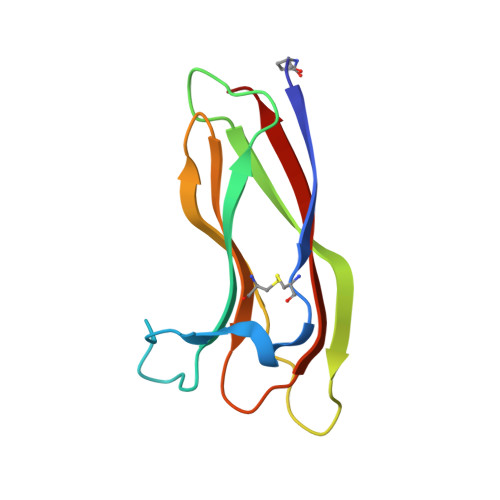Structural studies of Helix aspersa agglutinin complexed with GalNAc: A lectin that serves as a diagnostic tool.
Pietrzyk, A.J., Bujacz, A., Mak, P., Potempa, B., Niedziela, T.(2015) Int J Biol Macromol 81: 1059-1068
- PubMed: 26416237
- DOI: https://doi.org/10.1016/j.ijbiomac.2015.09.044
- Primary Citation of Related Structures:
4Q56 - PubMed Abstract:
Lectins belong to a differentiated group of proteins known to possess sugar-binding properties. Due to this fact, they are interesting research targets in medical diagnostics. Helix aspersa agglutinin (HAA) is a lectin that recognizes the epitopes containing α-d-N-acetylgalactosamine (GalNAc), which is present at the surface of metastatic cancer cells. Although several reports have already described the use of HAA as a diagnostic tool, this protein was not characterized on the molecular level. Here, we present for the first time the structural information about lectin isolated from mucus of Helix aspersa (garden snail). The amino acid sequence of this agglutinin was determined by Edman degradation and tertiary as well as quaternary structure by X-ray crystallography. The high resolution crystal structure (1.38Å) and MALDI-TOF mass spectrometry analysis provide the detailed information about a large part of the HAA natural glycan chain. The topology of the GalNAc binding cleft and interaction with lectin are very well defined in the structure and fully confirmed by STD HSQC NMR spectroscopy. Together, this provides structural clues regarding HAA specificity and opens possibilities to rational modifications of this important diagnostic tool.
Organizational Affiliation:
Institute of Technical Biochemistry, Faculty of Biotechnology and Food Sciences, Lodz University of Technology, Stefanowskiego 4/10, Lodz 90-924, Poland.




















